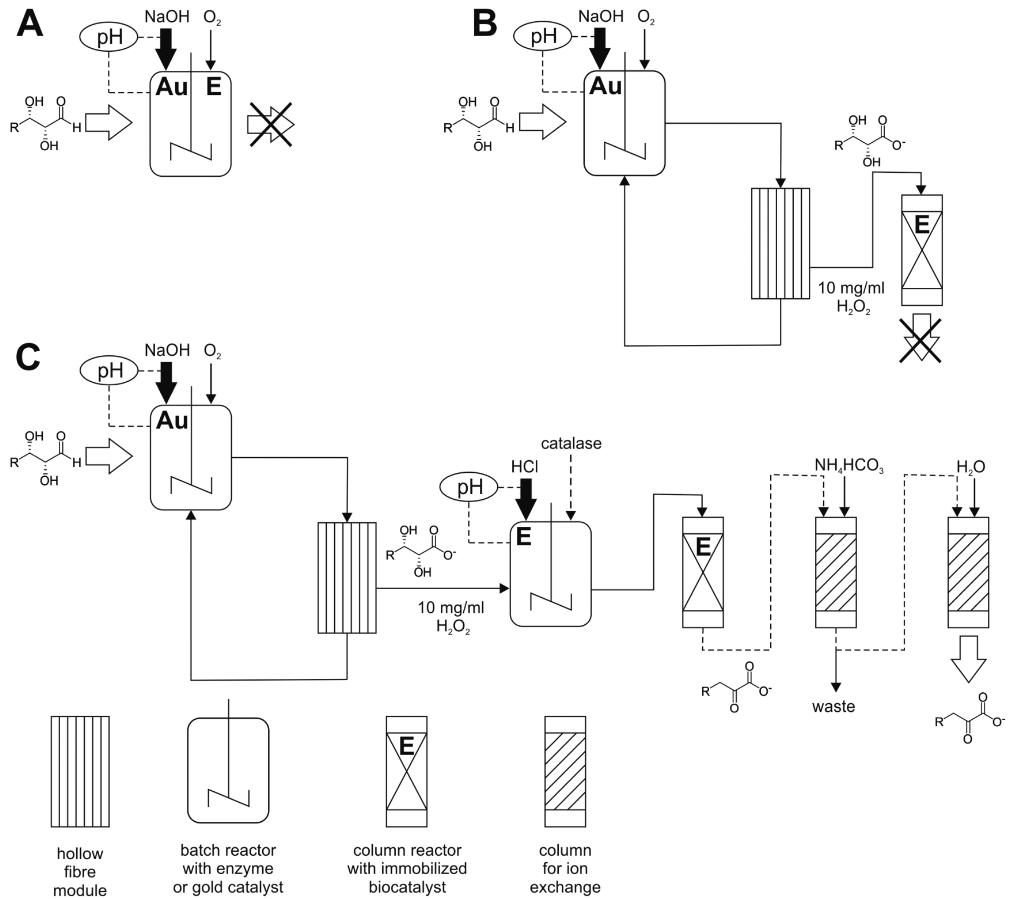Biohybrid Enzyme Catalysis
The new field of biohybrid enzyme catalysis aims to combine catalytic methods from different fields with enzyme catalysis. Our main focus is on chemo-enzymatic synthesis and biohybrid electrocatalysis for the generation of basic and fine chemicals from renewable raw materials.
There are already a number of examples where such biohybrid approaches are being explored. A wealth of organic and inorganic chemical catalysts and electrochemically used electrode materials exist. Nevertheless, they generally lack compatibility with enzymes and biogenic substrates and their associated solvents. On this basis, we are researching chemo-enzymatic and electro-enzymatic processes for the efficient and targeted conversion of complex biogenic raw materials. We have had initial success in combining chemical oxidation by molecular oxygen with biocatalytic dehydration reactions. As an example, four different 2-keto-3-deoxy sugar acids could be obtained by combining a gold catalyst retained in a continuous reactor with an immobilised dehydratase. Furthermore, the continuous combination of electrochemical reactions with bioenzymatic product generation is being researched in depth by means of process analyses and electrode development.

Figure 1: One-pot (A) and compartment setup for the chemoenzymatic synthesis of KDS. (B) Direct transfer of sugar acid solution to immobilised SsDHAD. (C) Adjustment of pH and removal of H2O2 by catalase treatment prior to loading of immobilised SsDHAD with sugar acid solution and subsequent purification of KDS via anion and cation exchange chromatography. Symbols and drawings are used in accordance with the literature. From DOI 10.1021/acscatal.6b01276nalyses and electrode development.
